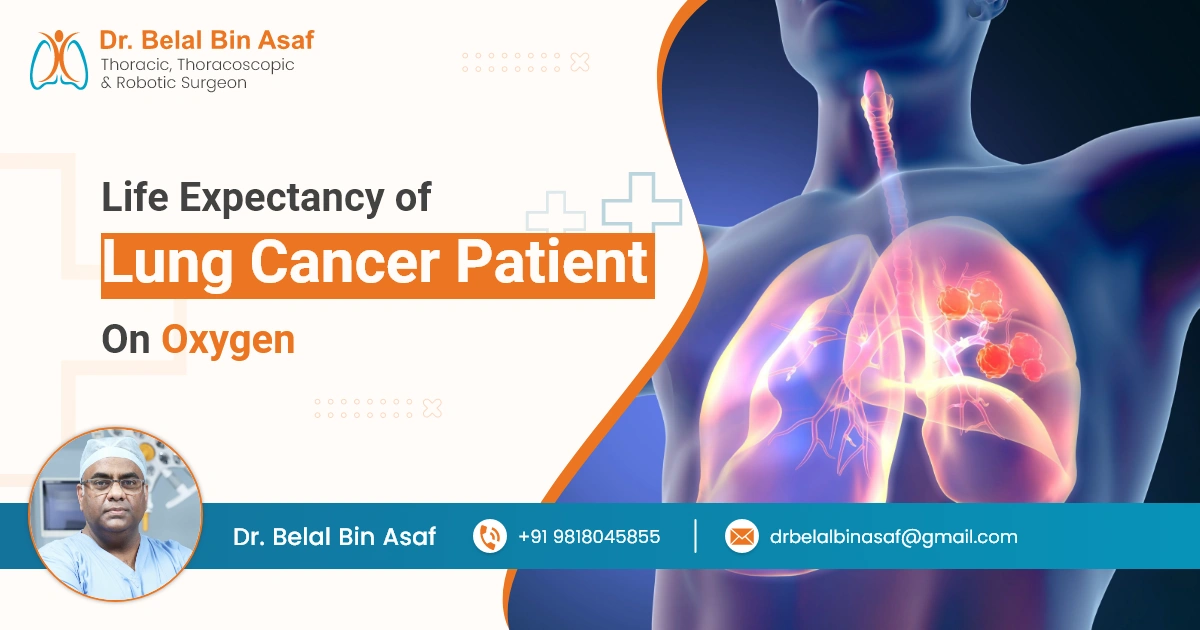Lung cancer is a serious illness that affects many people worldwide. As the disease progresses, it can impact a patient’s ability to breathe, leading to the need for oxygen therapy. Oxygen therapy helps patients manage symptoms like shortness of breath, fatigue, and low oxygen levels, improving their quality of life. However, the life expectancy of lung cancer patients on oxygen therapy can vary widely depending on factors such as the stage of cancer, the type of cancer, overall health, and how well the body responds to treatment.
Contents
What is Lung Cancer?
Lung cancer is a type of cancer that starts in the lungs, which are the organs in your chest that help you breathe. Your lungs bring in oxygen from the air and release carbon dioxide when you breathe out. When a person has lung cancer, the cells in the lungs start to grow uncontrollably and form a tumor, which can interfere with breathing.
There are two main types of lung cancer:
- Non-small cell lung cancer (NSCLC) – This is the most common type and grows more slowly.
- Small cell lung cancer (SCLC) – This type grows quickly and is less common.
The Role of Oxygen Therapy in Lung Cancer Treatment
Oxygen therapy is an important treatment for many people with lung cancer, especially for those who have trouble breathing. As lung cancer spreads or affects the lungs, the body may not get enough oxygen, which can cause symptoms like shortness of breath, tiredness, and dizziness. Oxygen therapy helps by adding extra oxygen to the body, making it easier to breathe and improving how patients feel overall.
Here’s How Oxygen Therapy Helps People with Lung Cancer:
- Makes Breathing Easier: As lung cancer grows, it can block the airways or damage the lungs, making it harder to breathe. Oxygen therapy gives pure oxygen through a mask or small tubes in the nose, which helps the lungs work better and raises oxygen levels in the blood.
- Relieves Symptoms: Oxygen therapy can help reduce symptoms like shortness of breath, tiredness, and confusion, which happen when oxygen levels in the body are too low. By making it easier to breathe, oxygen therapy helps patients feel more comfortable and improves their quality of life.
- Boosts Energy: Lung cancer can make people feel very tired because their body isn’t getting enough oxygen. Oxygen therapy helps by giving extra oxygen, which can make patients feel more energetic and able to do things like walking or eating.
- Eases Pressure on the Heart: Low oxygen levels can make the heart work harder to pump blood and oxygen around the body. Oxygen therapy reduces this strain on the heart, lowering the risk of heart problems for lung cancer patients.
- Improves Quality of Life: While oxygen therapy doesn’t cure lung cancer, it helps manage symptoms and makes life more comfortable. It can help patients stay active, sleep better, and reduce anxiety or stress related to breathing problems.
- Helps During Cancer Treatment: Oxygen therapy can also help people cope with cancer treatments like chemotherapy or radiation, which can cause temporary breathing problems or fatigue. By keeping oxygen levels stable, it can help patients feel better during treatment.
Factors That Influence Life Expectancy of Lung Cancer Patients on Oxygen
The life expectancy of lung cancer patients using oxygen therapy can vary based on several factors. Oxygen therapy helps with symptoms like shortness of breath but doesn’t cure the cancer. It can, however, make patients feel more comfortable and improve their quality of life. Here are the main factors that can affect how long a lung cancer patient might live while using oxygen:














 +91-9818045855
+91-9818045855
